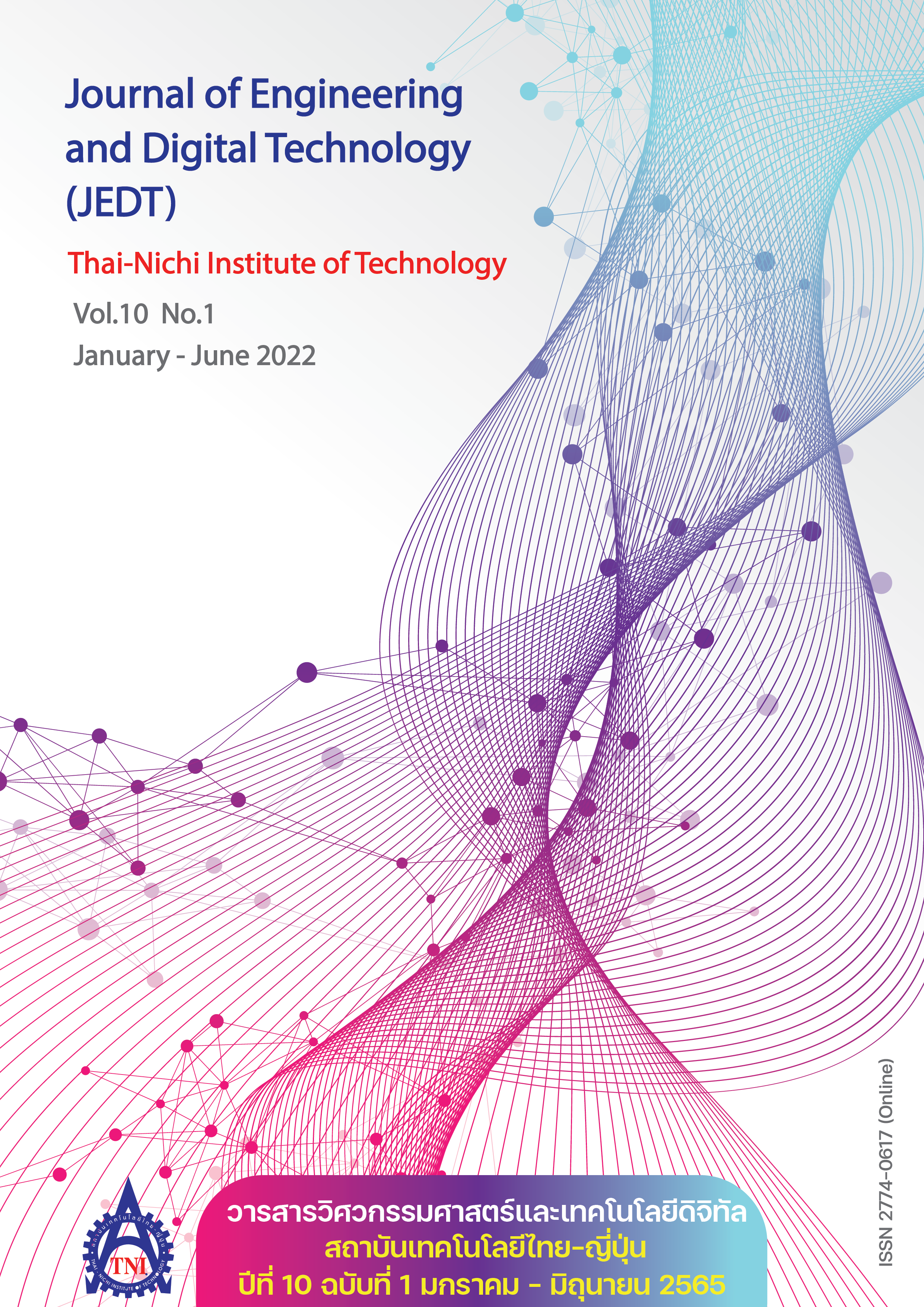Buildings Classification from Satellite Images by Transfer Learning
Main Article Content
Abstract
Satellite imaging technology is essential for various applications such as real estate analysis, disaster monitoring, and more. However, as satellite data is big data, it is time-consuming and challenging for humans to analyze it, even a simple task such as detecting the types of buildings in a large area. In this paper, we develop a satellite imaging-analytics technique by applying the transfer learning algorithm to learn and classify different types of buildings in Thailand. The proposed model is learnt and tested on our created datasets, namely 4CateSAT, including the images of buildings including (1) airports, (2) stadiums (football fields), (3) schools, and (4) temples in Thailand. We also apply well-known algorithms to handle the imbalanced data, and the experimental results show that the accuracy of the best model is 96.88%.
Article Details

This work is licensed under a Creative Commons Attribution-NonCommercial-NoDerivatives 4.0 International License.
Article Accepting Policy
The editorial board of Thai-Nichi Institute of Technology is pleased to receive articles from lecturers and experts in the fields of engineering and technology written in Thai or English. The academic work submitted for publication must not be published in any other publication before and must not be under consideration of other journal submissions. Therefore, those interested in participating in the dissemination of work and knowledge can submit their article to the editorial board for further submission to the screening committee to consider publishing in the journal. The articles that can be published include solely research articles. Interested persons can prepare their articles by reviewing recommendations for article authors.
Copyright infringement is solely the responsibility of the author(s) of the article. Articles that have been published must be screened and reviewed for quality from qualified experts approved by the editorial board.
The text that appears within each article published in this research journal is a personal opinion of each author, nothing related to Thai-Nichi Institute of Technology, and other faculty members in the institution in any way. Responsibilities and accuracy for the content of each article are owned by each author. If there is any mistake, each author will be responsible for his/her own article(s).
The editorial board reserves the right not to bring any content, views or comments of articles in the Journal of Thai-Nichi Institute of Technology to publish before receiving permission from the authorized author(s) in writing. The published work is the copyright of the Journal of Thai-Nichi Institute of Technology.
References
O. Russakovsky et al., “ImageNet Large Scale Visual Recognition Challenge,” Int. J. Comput. Vis., vol. 115, no. 3, pp. 211–252, 2015.
TensorFlow 2.6.0. (2021). Google.
N. V. Chawla, K. W. Bowyer, L. O. Hall, and W. P. Kegelmeyer, “SMOTE: Synthetic minority over-sampling technique,” 2011. [Online]. Available: arXiv:1106.1813.
R. R. Selvaraju, M. Cogswell, A. Das, R. Vedantam, D. Parikh, and D. Batra, “Grad-CAM: Visual explanations from deep networks via gradient-based localization,” in Proc. IEEE Int. Conf. Comput. Vis., Venice, Italy, Oct. 2017, pp. 618–626, doi: 10.1109/ICCV.2017.74.
T. Siriborvornratanakul. (2021). CNN Wrap-up [PowerPoint slides]. Available: https://as.nida.ac.th/~thitirat/homepage/index.html
M. Pritt and G. Chern, “Satellite image classification with deep learning,” in Proc. IEEE Appl. Imagery Pattern Recognit. Workshop (AIPR), Washington, DC, USA, Oct. 10–12, 2017, pp. 1–7.
P. Helber, B. Bischke, A. Dengel, and D. Borth, “EuroSAT: A novel dataset and deep learning benchmark for land use and land cover classification,” IEEE J. Sel. Top. Appl. Earth Obs. Remote Sens., vol. 12, no. 7, pp. 2217–2226, 2019.
D. P. Kingma and J. Ba, “Adam: A method for stochastic optimization,” 2014. [Online]. Available: arXiv:1412.6980.
K. He, X. Zhang, S. Ren, and J. Sun, “Delving deep into rectifiers: Surpassing human-level performance on ImageNet classification,” in Proc. IEEE Int. Conf. Comput. Vis., 2015, pp. 1026–1034, doi: 10.1109/ICCV.2015.123.
Google Earth. (2015). Google. Accessed: Feb. 1, 2021. [Online]. Available: https://earth.google.com/web/
K. Simonyan, and A. Zisserman, “Very deep convolutional networks for large-scale image recognition,” 2014. [Online]. Available: arXiv:1409.1556.
C. Szegedy, V. Vanhoucke, S. Ioffe, J. Shlens, and Z. Wojna, “Rethinking the inception architecture for computer vision,” 2015. [Online]. Available: arXiv:1512.00567.
K. He, X. Zhang, S. Ren, and J. Sun, “Identity mappings in deep residual networks,” 2016. [Online]. Available: arXiv:1603.05027.
G. Huang, Z. Liu, L. Van Der Maaten, and K. Q. Weinberger, “Densely connected convolutional networks,” in Proc. IEEE Conf. Comput. Vis. and Pattern Recognit (CVPR), Honolulu, HI, USA, Jul. 2017, pp. 2261–2269, doi: 10.1109/CVPR.2017.243.
F. Chollet, “Xception: Deep learning with depthwise separable convolutions,” 2016. [Online]. Available: arXiv: 1610.02357.


